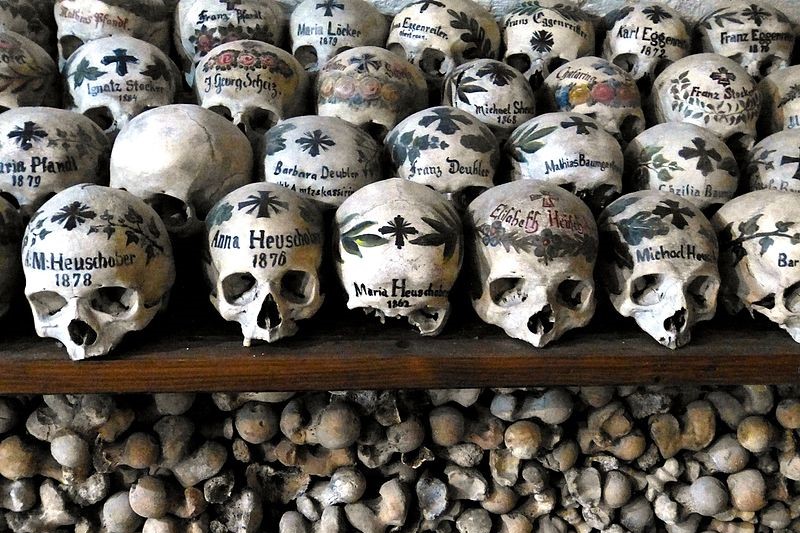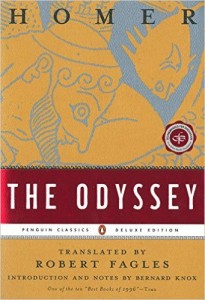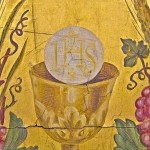
The specter of death haunts Western civilization at its roots like any other civilization. Greek and Roman popular religions saw death as ultimately defining what it means to be human. Mortality was so essential to being human for the ancients that Odysseus rejected the rare offer of immortality (essentially, to stop being human) by leaving Calypso’s island to return to Penelope in Ithaca.
 This gesture is incomprehensible to us, because posthumanist aspirations to overcome death define our post-Christian epoch. There was even a presidential candidate in the last election, Zoltan Istvan, who lured potential voters with a posthuman non-death like Calypso.
This gesture is incomprehensible to us, because posthumanist aspirations to overcome death define our post-Christian epoch. There was even a presidential candidate in the last election, Zoltan Istvan, who lured potential voters with a posthuman non-death like Calypso.
The Irish phenomenologist, Felix O Murchadha, captures the striking difference between Christian and ancient attitudes towards death in his A Phenomenology of Christian Life: Glory and Night:
The ancient gods—Greek and Semitic alike—abhorred death. In Homer the hero knew his death was imminent when he sensed the god or goddess who championed him fleeing from his presence. The destiny of death was that which not even Zeus, the father of the gods, could stop—nor could any god be present to it. Death separated the immortals from the mortals as that which the immortals could not know—neither of themselves nor of others. Knowledge of death separated the human from all other beings, including the gods.
The same sentiments, but filled with a dread of death mostly unfamiliar to the ancients, are what started me on reading Karl Ove Knausgaard’s remarkable My Struggle novels:
For the heart, life is simple: it beats for as long as it can. Then it stops. Sooner or later, one day, this pounding action will cease of its own accord, and the blood will begin to run towards the body’s lowest point, where it will collect in a small pool, visible from the outside as a dark, soft patch on ever whitening skin, as the temperature sinks, the limbs stiffen and the intestines drain. These changes in the first hours occur so slowly and take place with such inexorability that there is something almost ritualistic about them, as though life capitulates according to specific rules, a kind of gentleman’s agreement to which the representatives of death also adhere, inasmuch as they always wait until life has retreated before they launch their invasion of the new landscape.
You might object that, at the very least, Plato, Socrates, and their philosophical followers did not see death as the ultimate boundary of life. You might be partly right, even if not all philosophers thought immortality was our destiny. But it is important to remember, that no matter how central their texts and beliefs have become for the West thanks to their Christian appropriation, the philosophers were by no means the mainstream of ancient popular thinking.
 Socrates and Other Saints, a recently published book translation of mine, details how the Christian appropriation of philosophical ideas, especially about divinization, were finally democratized and made available to the masses–especially thanks to the witness of the martyrs (also an ancient philosophical, not mainstream, idea). A Phenomenology of Christian Life, in a discussion of Good Friday, reveals the incongruity between Socrates freely choosing death, even advocating practicing in preparation for death, with mainstream Greek beliefs, whose avoidance of death dictated even the structuring of cities:
Socrates and Other Saints, a recently published book translation of mine, details how the Christian appropriation of philosophical ideas, especially about divinization, were finally democratized and made available to the masses–especially thanks to the witness of the martyrs (also an ancient philosophical, not mainstream, idea). A Phenomenology of Christian Life, in a discussion of Good Friday, reveals the incongruity between Socrates freely choosing death, even advocating practicing in preparation for death, with mainstream Greek beliefs, whose avoidance of death dictated even the structuring of cities:
“Dying he destroyed our death . . .” Those words of the Catholic liturgy depend for their resonance not on a belief in the afterlife—such a belief was not (and is not) peculiar to Christianity. Rather, they mean a bringing of death into the realm of the living, a living with death in an unprecedented manner. Death, which in the ancient world was kept beyond the walls of the city and far away from sacred space, is now placed at the center of the holy. The dead and the divine were reconciled in one and brought within the city. Christian churches are tombs: built around altars which contain relics, bodies between life and death—dead and yet making present the principle of life, the example of Christ. The Christian worships among the dead, walks the way of death and crucifixion in the church, and goes through death in entering the church. Death is no longer unclean, no longer accursed. Rather, death as a leaving of life becomes a way of living: no longer a preparation for death but to live now as if after death, as if death were destroyed.
It is usually in terms of an emotive mourning the death of a certain Constantinian Christian cultural hegemony that we hear about churches being called tombs. This is seen as a bad thing. Thinking this way forgets a much more important ancient Christian insight. Death is a good thing. Death is something that we should welcome. It is our door to our true homeland. However, Good Friday reminds us that death is not something we can leap over thanks to the get-out-jail-free card of the Resurrection (click below to continue): . . .












